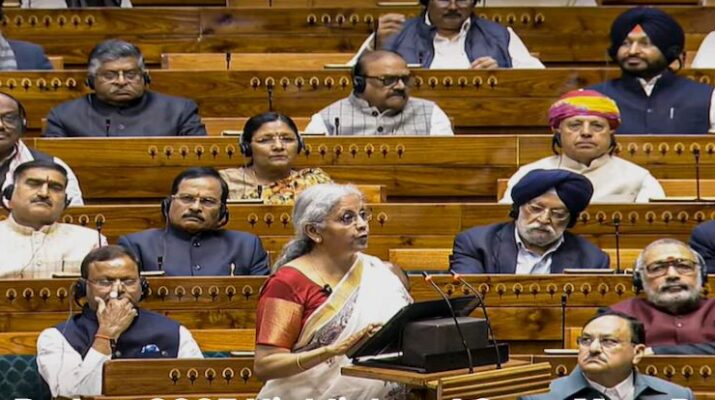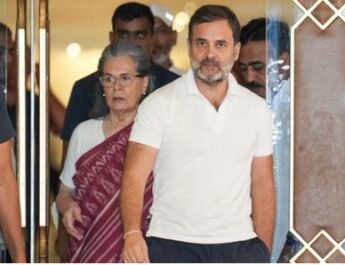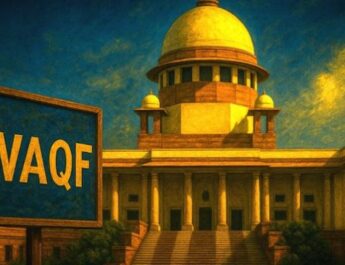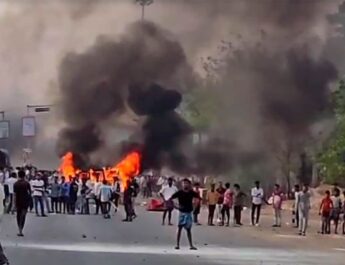New Delhi: Union Finance Minister Nirmala Sitharaman delivered her eighth budget speech on February 1, which lasted a mere 74 minutes—making it the shortest, aside from the interim budget presented last year, which was approximately one hour long. However, this speech is poised to be regarded as one of the most consequential in recent decades, featuring a comprehensive tax rebate designed to stimulate consumption demand and tackle a cyclical downturn in economic growth.
Leading up to the budget, there were high expectations for some form of tax relief, and Sitharaman’s opening remarks confirmed this anticipation: “This budget continues our government’s efforts to accelerate growth, secure inclusive development, invigorate private sector investments, uplift household sentiments, and enhance the spending power of India’s rising middle class,” she stated.
The Union Budget for 2025-26 introduced a tax rebate allowing individuals with earnings up to ₹12 lakh to pay no tax whatsoever. Additionally, it announced the imminent arrival of a long-awaited reform, the new income tax bill, scheduled for release next week, alongside a sustained emphasis on productive capital expenditure.
The announcement included an improvement in the fiscal deficit projection for 2024-25, along with a target for 2025-26 that was lower than anticipated. Additionally, modifications to customs duties were introduced, aimed at enhancing the competitiveness of Indian manufacturing. Plans were also revealed to streamline regulatory processes that hinder business operations.
Prime Minister Narendra Modi described the budget as a “force multiplier.” He stated, “This budget fulfills the aspirations of our citizens. We have opened numerous sectors for the youth. The common people will spearhead the mission of Viksit Bharat [developed India]. This budget is set to boost savings, investment, consumption, and overall growth.” The day prior, Modi had hinted at potential tax reforms, expressing hope that the goddess of wealth, Lakshmi, would “bestow blessings” upon the poor and middle class.
While addressing key demographics that are vital to the Bharatiya Janata Party (BJP) and its allies—namely the poor, youth, farmers, and women—the Budget for 2025-26 also sought to engage the middle class. This group has historically supported the BJP but has felt overlooked in recent years, particularly regarding the allocation of benefits to other sectors.
“The middle class is a cornerstone of India’s growth. This government, under Prime Minister Modi’s leadership, has consistently recognized the remarkable energy and potential of the middle class in nation-building. In acknowledgment of their contributions, we have regularly reduced their tax obligations,” the finance minister emphasized in her address, highlighting the tax relief measures.
The tax rebate is not exclusively available to individuals earning up to ₹12.75 lakh; under the revised tax framework, the threshold for the highest tax rate of 30% has been raised to an annual income of ₹24 lakh, an increase from the previous limit of ₹15 lakh. This adjustment translates to a potential annual savings of ₹1.1 lakh for those earning ₹24 lakh.
In addition to alleviating concerns among the middle class, the tax rebate is anticipated to provide political advantages for the BJP and its allies, particularly in Delhi, where elections are imminent. The finance minister also introduced several initiatives aimed at Bihar, including enhancements to airport infrastructure and the establishment of a board for fox nuts (Makhana). Bihar is set to hold elections later this year. However, the budget encompasses more than merely the tax rebate.
The finance minister identified what she referred to as the “four engines of development”: agriculture, Micro, Small, and Medium Enterprises (MSMEs), investment, and exports. She elaborated on initiatives for each sector, asserting that these efforts would propel India towards becoming a developed nation (Viksit Bharat) by 2047.
In the agricultural sector, the budget proposed a targeted program to uplift farmers in 100 districts characterized by low agricultural productivity, initiatives to promote crop diversification, an increase in the loan limit available through Kisan Credit Cards, and a campaign aimed at achieving self-sufficiency in pulse production.
The finance minister has proposed an expanded definition for micro, small, and medium enterprises (MSMEs), which includes higher thresholds for revenue and investment. Additionally, there will be an increase in credit guarantee coverage, the introduction of tailored credit cards for small businesses, and a program aimed at assisting first-time entrepreneurs.
To enhance investment, the budget has raised the Foreign Direct Investment (FDI) limit in the insurance sector, introduced measures to eliminate regulatory obstacles, established an investment friendliness index for states, and committed to overhauling bilateral investment treaties.
In terms of export promotion, the budget has allocated ₹2,250 crore for the establishment of an export promotion mission and aims to simplify credit access for exporters.
All these initiatives have been proposed while maintaining fiscal responsibility, with the finance minister projecting a fiscal deficit of 4.4% of GDP for the fiscal year 2025-26, which is lower than the expected 4.5%. The focus on capital expenditure remains strong, accounting for 3.1% of GDP, similar to the previous year. This indicates an expectation for private investment to contribute significantly. The finance minister stated that each ministry related to infrastructure will develop a three-year project plan that can be executed in collaboration with private entities.
This approach could enhance the investment aspect of GDP growth, while the tax rebate may address the consumption side. Together, these measures could foster a long-awaited virtuous cycle within the economy.




